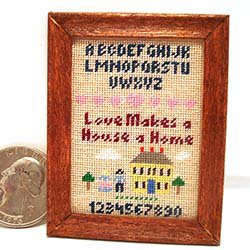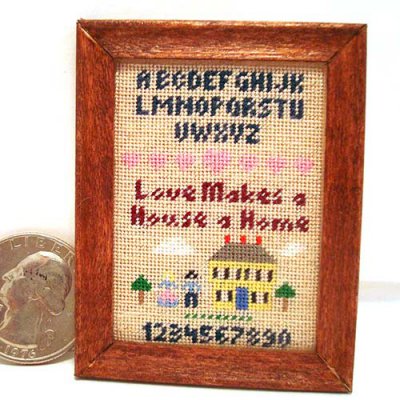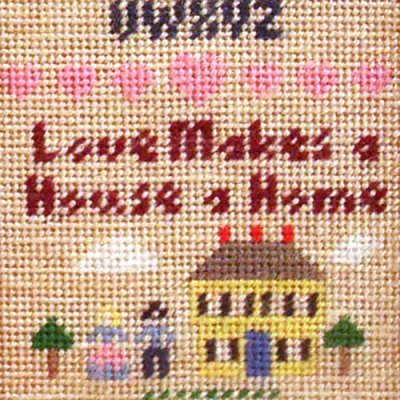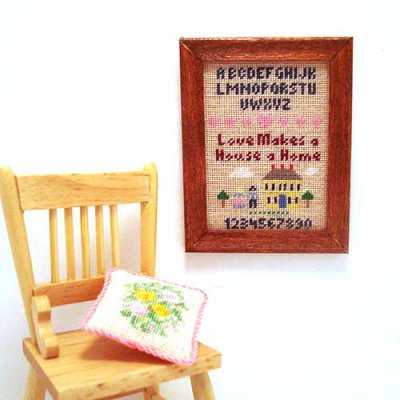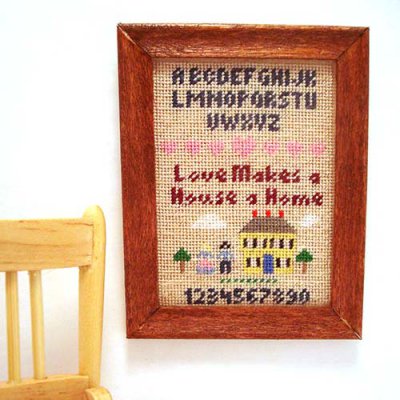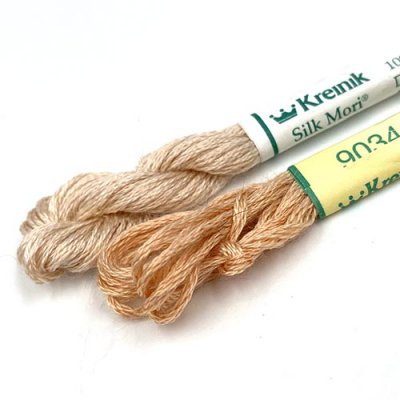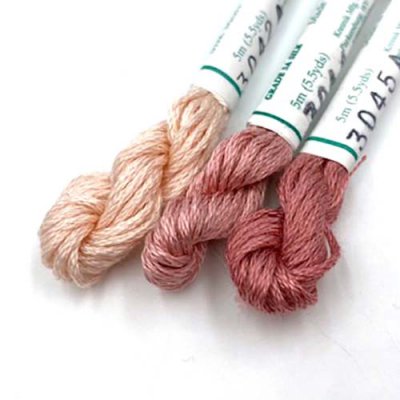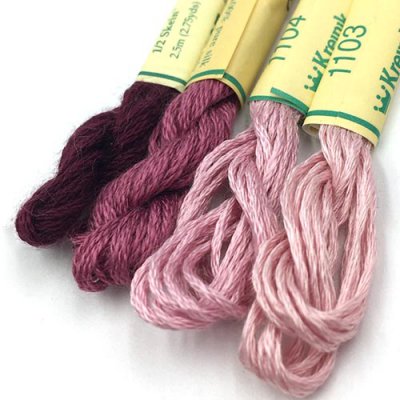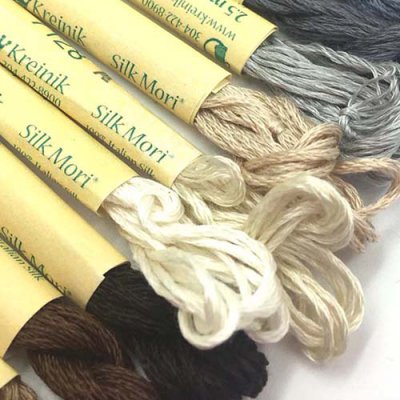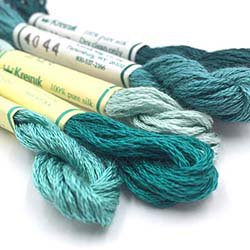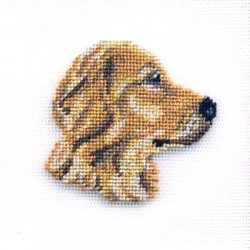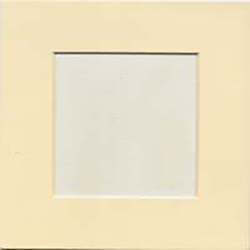Love Makes a Home silk gauze sampler
NOTE: This item is not shipped. Click the link below to download the PDF.
Love Makes a House a Home PETIT POINT project
by Terrie Lyn Nutter
- An antique sampler exhibit at the Baltimore Museum of Art once displayed a needlework piece stitched by a young American girl in the late 1800s. It was stitched on a piece of gauze that had previously been wrapped around the wounds of a Civil War soldier hurt in a battle near her family's home. Imagine the stitches of silk thread embroidered on the transparent, thin, almost gossamer gauze. The stitches seemed to hang in the air.
This translucent, dimensional effect is one of the beauties of silk gauze embroidery, used throughout the centuries and growing in popularity today for petit point needlework and miniatures.
What is silk gauze?
Silk gauze is a 100% pure filament silk canvas. The silk threads are fine but very strong. Silk gauze is woven in a leno structure, which increases the stability of the canvas. Leno weave actually interlocks the weft threads making it almost impossible for them to shift. It comes in various sizes, including 18-count, 32-count and 40-count.
When do you stitch on silk gauze?
Stitch on silk gauze anytime you want a small, delicate piece of needlework. Miniaturists and doll house enthusiasts enjoy silk gauze needlepoint pieces because you can achieve realistic looking items. For example, doll house rugs, pillows, pictures, and bell pulls can be stitched to scale: 40-count silk gauze is perfect for 1-inch to 1-foot scale.
Silk gauze work is also now gaining popularity among cross stitchers and needlepointers looking for something different (aren’t we all attracted by miniature things?).
How do you stitch on silk gauze?
The first step in stitching on silk gauze is choosing a project. Almost any charted cross stitch design can be used for silk gauze needlepoint. Here you can stitch Love Makes a House a Home for a project. Designs without quarter stitches, blended colors, backstitches, or elaborate color changes make the most successful silk gauze needlepoint projects. You stitch over one thread on silk gauze.
Continental (tent) stitch is the appropriate stitch for silk gauze because it makes for smooth, even silk gauze needlework. Also, it is easier to stitch tent through such petite holes. The use of tent stitch, for example, will have a maximum of two threads in a hole whereas cross stitch could have as many as four stitches per hole. Generally, you stitch with silk threads on silk gauze.
Stitching tips
Sharp scissors, good lighting, and magnifiers can make stitching on silk gauze a breeze.Starting at the top of a chart makes it easier to keep your place on the chart while stitching. A magnet board will also help, or simply cross out stitches on the chart that have been completed as you go along.
Choosing the appropriate needle for silk gauze is also important, as using a needle that is too large can distort the canvas. For 18-count silk gauze, for example, you would use a #26 Tapestry needle with 3 strands of Silk Mori. ON 32-mesh, use a #28 Tapestry with two strands of Silk Mori. On the very fine 40-count, used in this design, Terrie Lynn Nutter recommends a #10 Crewel needle with one strand of Silk Mori.
When stitching on silk gauze, a neat back is especially important if some of the background is left unstitched. When starting a thread, try to use an ‘away waste knot’ to begin. You may sometimes be able to end a thread using this same technique, resulting in less bulk on the back of your work. When ending threads by ‘running’ under stitches, use caution so that the tension of the stitches is not changed.
A dark piece of cloth behind your work makes the holes of the silk gauze ‘pop’ and you can see the threads that need to be covered.
Materials needed:
- Kreinik Silk Mori in 8050, 7012, 7133, 1033, 1032, 2024, 4036, 5095, 8000, 7126, 5093, 5057, 1119, 3017, 8075
- Kreinik 40-count silk gauze, framed, at least 3" x 5" size
- #10 crewel needle
Instructions:
Download the graph and color key for this design by clicking on the PDF below. Stitch this design on the gauze using one strand of Silk Mori according to the color key in continental (tent) stitch. Follow the stitching tips above. Silk gauze work is not necessarily fast stitchery, but it is rewarding. And many will admire your creation. Enjoy.
Click here to download the FREE instructions for this design.You will need the Adobe Reader to view and print this file.



